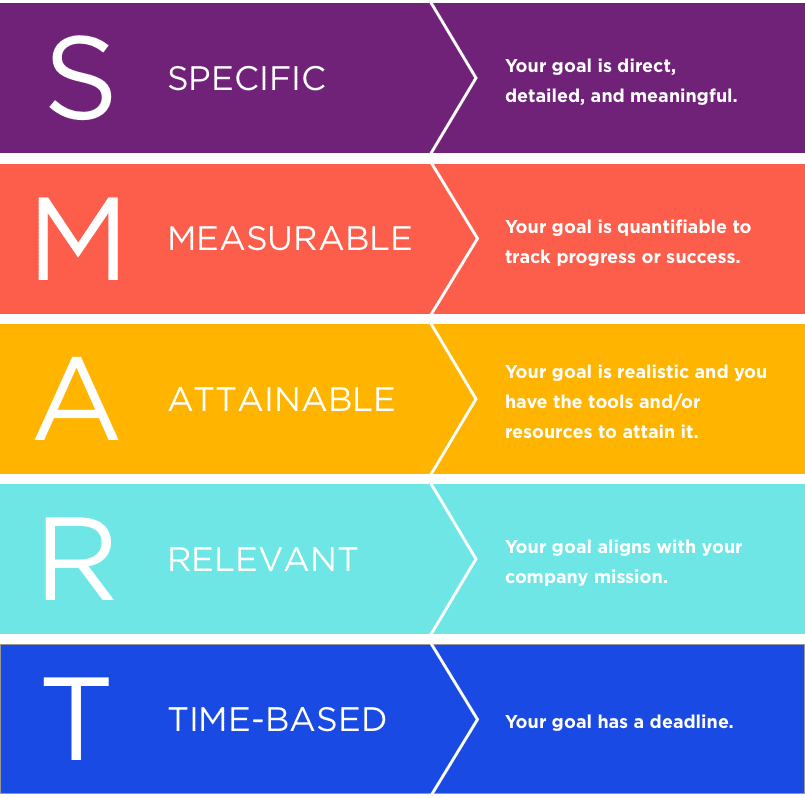Unlock the key to achieving your professional dreams with these 5 simple steps for setting and reaching smart goals at work.
Table of Contents
Introduction to Smart Goals
Have you ever heard of SMART goals for professional development? They’re like magical tools that can help you get better at your job! Today, we’re going to dive into what SMART goals are all about and why they are super cool for growing in your career.
What are SMART Goals?
SMART goals are like a super-powered to-do list for your job! They are specific, measurable, achievable, relevant, and time-bound. This means that they are clear, trackable, doable, important, and have a deadline. With SMART goals, you’ll know exactly what you need to do to improve and succeed at work.
Why SMART Goals Rock
SMART goals rock because they give you a roadmap to follow in your professional development journey. They help you focus on the things that truly matter and avoid wasting time on tasks that won’t help you grow. With SMART goals, you can stay motivated, track your progress, and celebrate your successes along the way.
Step 1: Be Specific
In this step, we’ll talk about how to make your work goals super clear. No foggy ideas allowed!
What Does Specific Mean?
Being specific is like telling a friend exactly where to find your favorite snack in a big store. Instead of saying, “I want to get better at my job,” you could say, “I want to improve my time management skills by reducing the time it takes me to complete tasks by 20%.” See how specific that is? It gives you a clear target to aim for, like a bullseye in archery!
Make It Measurable
When it comes to setting goals for yourself at work, it’s essential to make sure you can track your progress. This is where making your goals measurable comes into play. Think of it like playing a game where you can see who’s winning and how close you are to reaching the finish line.

Image courtesy of www.worktango.com via Google Images
How to Measure Your Success
Measuring your success is like keeping score in a game. You want to know if you’re getting closer to your goal or if you’re just spinning your wheels. One way to do this is by setting specific milestones or benchmarks along the way. These are like checkpoints that help you see how far you’ve come and how much further you need to go.
For example, if your goal is to improve your customer service skills, you could set a milestone to receive positive feedback from five customers in a month. Each time you receive positive feedback, you know you’re moving in the right direction.
Measuring your progress not only helps you stay motivated, but it also lets you know if you need to adjust your approach. If you’re not seeing the results you want, you can tweak your strategy and try something new until you start moving in the right direction.
Step 3: Achievable Goals
When setting goals for your professional development, it’s important to dream big and aim high. Think about where you want to be in the future and what skills you want to develop. However, it’s also crucial to stay grounded and set goals that are achievable. Just like you wouldn’t try to jump over a building in a single leap, setting realistic and attainable goals at work is key.
By setting goals that are within reach, you can build confidence as you work towards them. Achieving smaller milestones along the way will motivate you to keep going and push yourself further. Remember, Rome wasn’t built in a day, and your professional growth will take time and effort.
So, dream big, but make sure your goals are realistic and manageable. This way, you can steadily progress towards your vision while staying motivated and focused on your development.
Now, let’s move on to the next step in crafting SMART goals for your professional development.
Be Relevant
When you’re choosing your goals for work, it’s essential to pick ones that really mean something to you. Think of it like picking your favorite game to play – your goals should be both fun and significant. If your goals don’t excite you or feel important, you might not be as motivated to work towards them.

Image courtesy of www.indeed.com via Google Images
For example, if you love working with numbers and data, a goal related to analyzing financial reports or improving budget forecasts could be right up your alley. On the other hand, if you enjoy interacting with people and helping them solve problems, a goal centered around improving customer satisfaction scores or enhancing communication skills might be more relevant to you.
By selecting goals that align with your interests, strengths, and values, you’ll be more likely to stay engaged and committed to achieving them. Remember, your goals should be like pieces of a puzzle that fit perfectly with your work life, making them both challenging and rewarding.
Step 5: Time-Bound Goals
When we talk about time-bound goals, we mean giving your goal a deadline. Just like you have a time to finish your homework before your favorite TV show starts, your work goals need a finish line too. Setting a deadline helps you stay focused and motivated to work towards achieving your goal.
| Step Number | Description |
|---|---|
| 1 | Set Specific Goals: Make sure your goals are clear and well-defined. |
| 2 | Make Goals Measurable: Define how you will measure progress towards your goals. |
| 3 | Set Achievable Goals: Ensure that your goals are realistic and attainable. |
| 4 | Relevant Goals: Align your goals with your overall objectives and responsibilities. |
| 5 | Time-Bound Goals: Set deadlines or milestones to keep you focused and accountable. |
Imagine you have a goal to learn a new skill at work. Instead of just saying, “I want to learn this skill,” you could say, “I will learn this skill within the next three months.” This way, you have a clear timeframe to work towards and can track your progress along the way.
By setting a finish line for your goals, you create a sense of urgency and accountability, pushing yourself to take action and make progress. Remember, a goal without a deadline is just a dream!
Putting It All Together
Now that we’ve walked through the 5 steps for crafting SMART goals at work, it’s time to bring everything together and create your very own SMART goal that will help you grow and succeed in your professional development.
Image courtesy of www.freepik.com via Google Images
Crafting Your Own SMART Goal
Imagine you want to get better at math. Let’s turn that into a SMART goal:
Specific: I will improve my math skills by practicing multiplication tables for 15 minutes every day after school.
Measurable: I will track my progress by taking a timed multiplication quiz every week to see how much faster I can solve the problems.
Achievable: I will start with smaller numbers and gradually increase the difficulty as I get better at multiplying.
Relevant: Improving my math skills will help me succeed in school and build a strong foundation for my future career.
Time-Bound: I will achieve my goal of mastering multiplication tables up to 12 by the end of the semester.
By following these steps and creating a SMART goal that is specific, measurable, achievable, relevant, and time-bound, you can set yourself up for success in your personal development journey at work.
Tips and Tricks
Setting goals can be super fun and exciting! Here are some tips and tricks to make crafting SMART goals a breeze.
Making Goals Fun
Setting goals is like going on a cool adventure in a video game. You get to choose where you want to go and what you want to accomplish! So, when you’re thinking about your goals, make sure to pick things that really excite you. It could be learning a new skill, getting better at something you love, or even trying something totally new!
Conclusion
Throughout this guide, we’ve delved into the world of SMART goals and how they can be your secret weapon for personal and professional growth. By following the five steps we discussed, you can transform your work goals into clear, achievable targets that propel you towards success.

Image courtesy of ideas.baudville.com via Google Images
Setting SMART goals isn’t just about checking items off a list—it’s about creating a roadmap that guides you towards your aspirations. These goals help you focus, measure your progress, and stay motivated on your journey to becoming the best version of yourself.
Remember, SMART goals are like a GPS for your career, steering you in the right direction and keeping you on track. By crafting goals that are specific, measurable, achievable, relevant, and time-bound, you are laying the foundation for continuous growth and development.
So, as you embark on your goal-setting adventure, keep in mind the power of SMART goals in shaping your future. With determination, perseverance, and a sprinkle of creativity, you’ll be well on your way to achieving your dreams and reaching new heights in your professional journey.
FAQs
What if My Goal Seems Too Big?
Don’t worry if your goal seems as big as a mountain! We can break it down into smaller pieces, like solving a puzzle one piece at a time. This way, it won’t feel so overwhelming, and you can make progress step by step.
Can I Have More Than One Goal?
Absolutely! Just like you can have more than one favorite ice cream flavor, you can have more than one goal at work. It’s great to have different goals to work towards, as they can help you grow in different ways and keep things interesting.


Leave a Reply